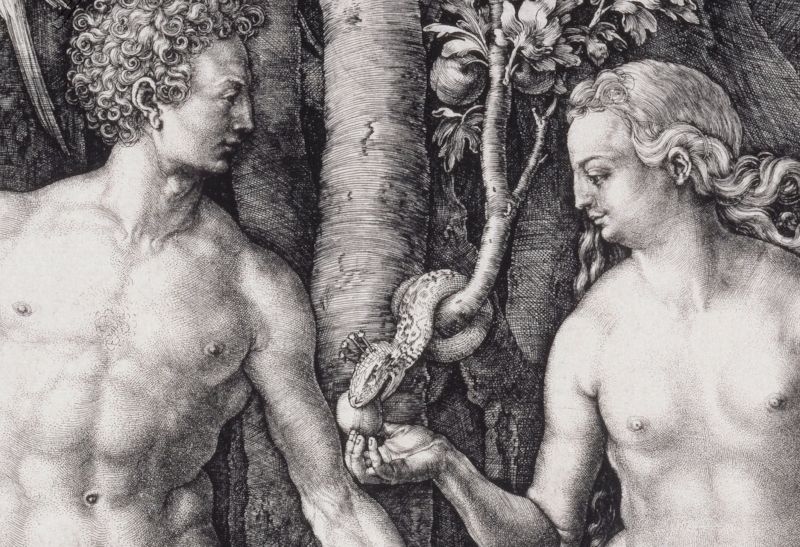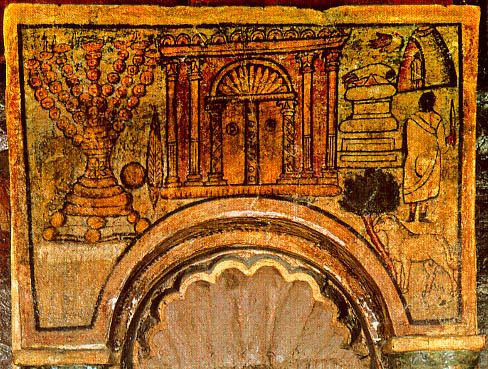How do the rabbis conceptualize the biblical “cleverness” of the snake? How do such ideas map onto larger questions of human and animal embodiment?
Read MoreDissertation Spotlight | Nathan Schumer
The Torah Shrine at Dura Europas via Wiki Commons
The Torah Shrine at Dura Europas via Wiki Commons
"Why does the Mishnah get so many historical details about the Second Temple period right?"
Read MoreArius Redivivus, Yet Again
My book aims in part to connect debates between Nicenes and Homoians in Vandal Africa—and across the post-imperial West—to those wider developments in the historiography of late ancient Christianity from which they have been peculiarly absent.
Read MoreCuriouser and Curiouser: In Search of the Rabbis' Ethnography
Are there patterns among these descriptive detours, the rabbit-holes of the rabbinic imagination? Do they point to consistent interests? Retrace stock motifs and techniques? How can we map their interconnections, and how are they linked to normative projects–broadly defined–at the nerve-center of this rabbinic canon?
Read MoreAugustine and “Thinking with” Jews: Rhetoric Pro- and Contra Iudaeos
To call a gentile Christian a “Jew” was likewise to accuse him of being un-Christian, indeed of being anti-Christian. The heretical Christian “Jew” – whatever current Christian doctrinal enemy that might be – was thereby identified with the scriptural enemies of Paul, of Jesus, and of God.
Read MoreVoices, Fragments and Selves: Preserving Ancient and Contemporary Multi-vocality in Our Classrooms
Whose voices from the past have been preserved, whose voices have been lost, and what is at stake, ethically and methodologically, for whose voices, past and present, we choose to hear today?
Read MorePSCO 2017-18: Nurses, Midwives, Healers, and Talmudic Medical Encyclopaedism
Lehmhaus’s talk pointed to exciting possibilities for future scholarship which grapple with how to fully understand the multipolar functions, within rabbinic literature and beyond it, of discrete bits of scientific or medical data embedded in rabbinic texts.
Read MoreIncompatible Sites: The Land of Israel and the Ambulant Body in the Museum of the Bible
Perhaps we should trip in the same way on that word “museum.” We should attend to the stories museums and colonies tell about themselves; we should be cognizant of their designs on the body.
Read MoreThe Creationist MOTB: Judaism and Judaica at the Answers in Genesis Creationist Facilities
The issue that concerns this paper is not how the MOTB lends credence to creationist claims, although this must be addressed to some extent, but how the MOTB becomes party to a disturbing misrepresentation of Jews and Judaism at the AiG attractions.
Read MoreThe Museum of Whose Bible? On the Perils of Turning Theology into History
"While making pretenses to neutrality, the Museum of the Bible is fundamentally a political project attempting to define what the Bible is and who owns it."
Read MoreThe Museum of the Bible as Mediator of Judaism
This panel sparked further discussion among scholars and the broader public, such as in a Washington Post article. In collaboration with AJR, scholars from this panel will be sharing their work with the larger scholarly community and the public.
Read MoreOn Ben Wright and the Modeling of Scholarship
Sean Adams (“On Ben Wright and the Modeling of Scholarship”) engages Ben’s work on genre theory to consider how the Letter of Aristeas might be read alongside Greek symposia, and offers a retrospective on the work and example of an inspiring teacher.
Read MoreSolomon, the Septuagint, and Second Temple Studies
Judgement of Solomon by Antoine Sallaert in Stedelijke Administratie Roeselare. Public Domain.
Judgement of Solomon by Antoine Sallaert in Stedelijke Administratie Roeselare. Public Domain.
James Nati (“Solomon, the Septuagint, and Second Temple Studies”) illustrates how crossing generic and canonical boundaries—in his case study, reading Ben Sira and the Septuagint side by side—can reveal new insights about how early Jewish traditions developed.
Read MoreEducation as Demonstrated and Education as Discussed in the Letter of Aristeas
11th Century Manuscript of Letter of Aristeas from Biblioteca Apostolica Vaticana
11th Century Manuscript of Letter of Aristeas from Biblioteca Apostolica Vaticana
Jason M. Zurawski (“Education as Demonstrated and Education as Discussed in the Letter of Aristeas”) shows how we might enrich our understanding of ancient education by reading both for a text’s ideology and rhetoric, and for its unwittingly revealed social context, while knowing the difference between these two kinds of evidence.
Read MoreErasing the Hyphen from the Study of Early Judaism
Zodiac mosaic at the Beit Alpha synagogue.
Zodiac mosaic at the Beit Alpha synagogue.
Francis Borchardt (“Erasing the Hyphen from the Study of Early Judaism”) builds on Ben’s work on Hellenistic Jewish ethnicity to discuss how to think about Jewish self-definition in the Hellenistic period, in light of the great diversity of the sources, practices, and communities we call Jewish.
Read MoreEmulation in Ben Sira and its Hellenistic Context
Print introducing Sirach from 17th century Claes Janszoon Visscher Dutch Polyglot Bible
Print introducing Sirach from 17th century Claes Janszoon Visscher Dutch Polyglot Bible
Elisa Uusimäki’s essay (“Emulation in Ben Sira and its Hellenistic Context”) shows how the idea of the sage might be better understood by reading Jewish texts like Ben Sira together with non-Jewish Greek philosophical writing on how to learn virtue.
Read MoreThe Translation of the Torah in Alexandria and the Relevance of the Rosetta Stone
The Rosetta Stone in the British Museum. Attribution: © Hans Hillewaert
The Rosetta Stone in the British Museum. Attribution: © Hans Hillewaert
Stewart Moore (“The Translation of the Torah in Alexandria and the Relevance of the Rosetta Stone”) engages Ben’s scholarship on the purpose of the Septuagint translation, highlighting its possible implications for the ethnic identity of Judeans in Egypt.
Read MoreThe Role of Wisdom for the Scribe and Scholar
"The Librarian" by Guiseppe Arcimboldos. Public Domain.
"The Librarian" by Guiseppe Arcimboldos. Public Domain.
James Tucker (“The Role of Wisdom for the Scribe and Scholar”) considers how our understanding of the Qumran Community Rule and the Damascus Document might be informed by critiques of traditional philological concepts of “original text” and “work,” considerations familiar from Ben’s work on the complicated textual history of Ben Sira.
Read MoreBen Sira as a Baby: The Alphabet of Ben Sira and Authorial Personae
Betty Blythe as the Queen of Sheba, 1921
Betty Blythe as the Queen of Sheba, 1921
Jillian Stinchcomb (“Ben Sira as a Baby: The Alphabet of Ben Sira and Authorial Personae”) shows how the persona of the sage and “author” we see in the early Jewish book of Ben Sira takes surprising--and sometimes shocking--turns in Ben Sira’s medieval afterlife.
Read MoreVoice and Presence in the Genesis Apocryphon
"Sarai Is Taken to Pharaoh's Palace" by James Tissot. The Jewish Museum of NYC.
"Sarai Is Taken to Pharaoh's Palace" by James Tissot. The Jewish Museum of NYC.
Dr. Jacqueline Vayntrub (“Voice and Presence in the Genesis Apocryphon”) considers how the voice and agency of Sarai in the Genesis Apocryphon, an Aramaic text from Qumran, complicates our ideas about the authoritative first person voice in Second Temple Jewish texts.
Read More


















